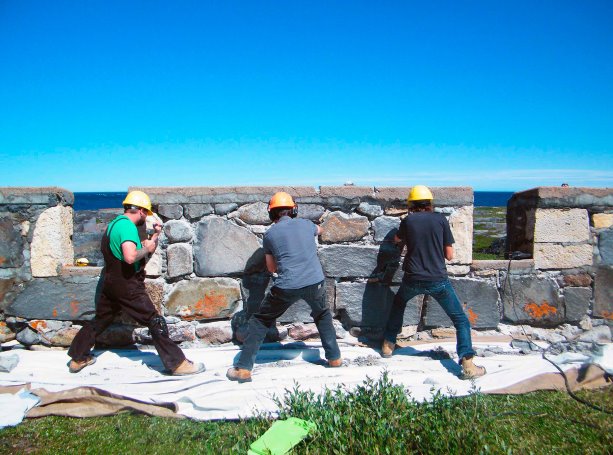Algonquin College has built a reputation for its heritage construction programs. While students from around the world have enrolled in the college’s two-year Heritage Carpentry and Joinery program, many follow up by completing its 45-week Heritage and Traditional Masonry program as well.
"We’re getting a lot of calls for employment in both heritage woodwork and masonry," says Darrin MacDonald, co-ordinator of Algonquin’s Heritage and Traditional Masonry program offered at its Perth campus.
"There’s so much work out there that the person who possesses both those skills will probably have a fast track to employment. We’ve had students from both the U.S. and France completing both programs."
The heritage carpentry program offers positions to about 45 students per year, while the heritage masonry program typically accepts about 35. MacDonald says that students who take both programs like the compact nature of the masonry program and its emphasis on unique placements and work experience offerings.
Recent projects have included the construction of a drystone wall — built without mortar — at the Perth campus and work on the historic Cape Merry Battery along the shore of Hudson Bay at the mouth of the Churchill River in northern Manitoba.
The drystone wall, built this summer, is part of an ongoing series of wall projects at Perth.
"We have a little church wall with buttresses, weathering caps and a cornice on top that was built with mortar and which we use for restoration purposes," MacDonald says.
"The drystone project involved 16 students building a wall approximately 40 feet long using limestone from Madoc, north of Peterborough. The students really enjoy working with the different colours of stone."
The wall is built in two courses — an inner and outer wall tied together at intervals using stones that bridge and cap both structures.
"The one trick is having as many stones making contact with each other as possible," says MacDonald.
"The strength of the drystone wall is based on friction."
Drystone building specialists are divided on whether a wall performs best when built with mismatched stones or those matched according to size. MacDonald prefers the challenge of using stones of varying sizes for the main construction, then using smaller stones to pack into any gaps. The weakest points of a drystone wall are its ends, where students need to choose stones more carefully.
MacDonald’s final test for successful construction — walking across the top of the wall.
"Properly built, a wall like this will last hundreds of years," he says. "It will still be there for our grandkids."
Six students were also flown to the Cape Merry Battery in July by Parks Canada to assist in maintenance of the strategic cannon emplacement built there in 1749.
"It’s probably the oldest site I’ve ever worked on," says MacDonald, who worked alongside the students and two masons from Parks Canada to repoint some of the stonework. "The walls are made of three types of stone, including quartzite, local limestone and granite. These are big boulder walls four feet thick with sloped concrete coping that is probably not original."
Well-meaning restoration crews had used Portland cement to point the walls about 50 years ago. The summer crew removed the cement and replaced it with more historically accurate lime-based pointing mortar.
"You need to walk a narrow path to get to the site, so it proved too difficult to bring in our mixer overland," says MacDonald. "Instead we had to transport the mixer and lime to the site by helicopter."
He notes that the crew’s goal was not to restore the site, but to stabilize the ruins and conserve the structure for future efforts.
"It’s not like doing fine restoration work on the Parliament Buildings," MacDonald says. "On the other hand, we had the pleasure of seeing several polar bears at a safe distance."



Recent Comments
comments for this post are closed